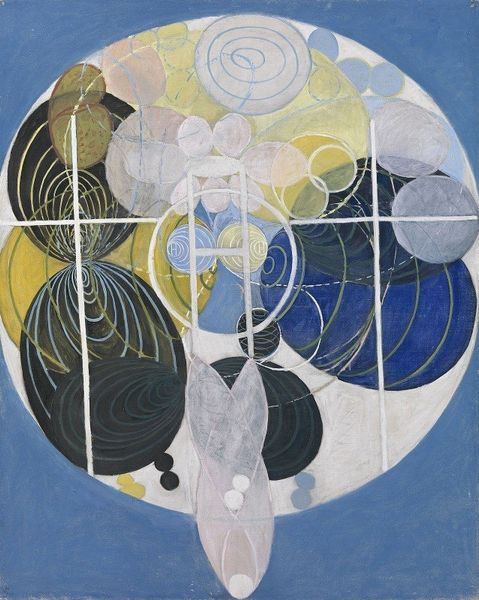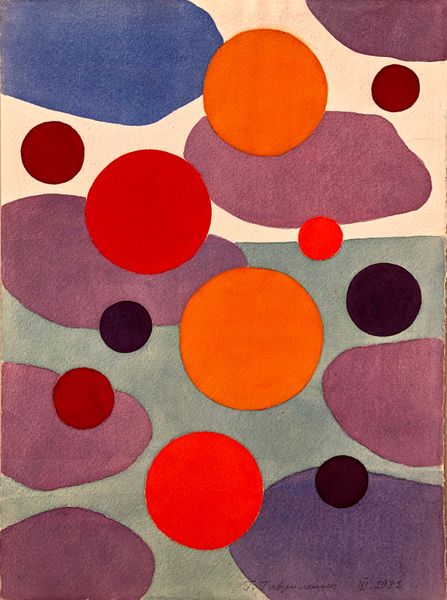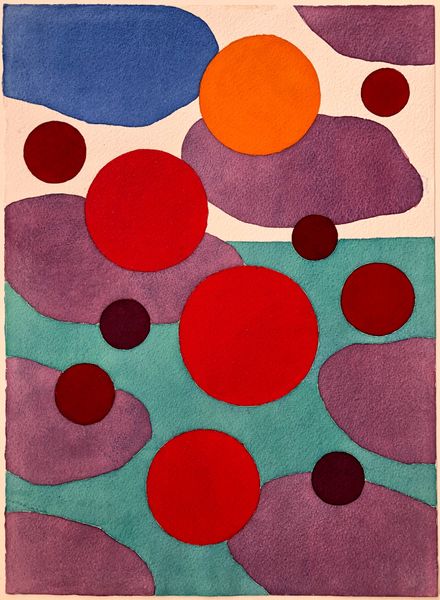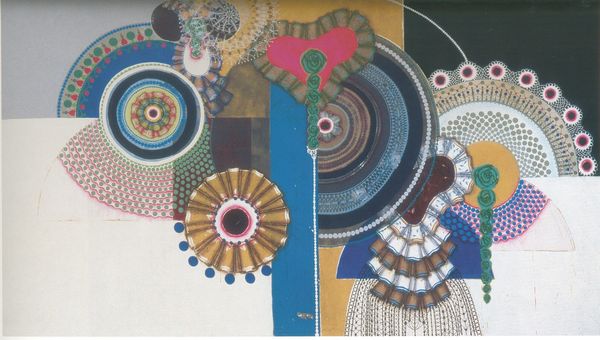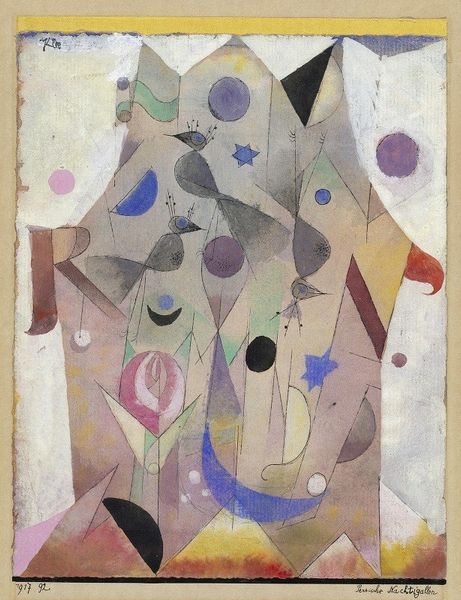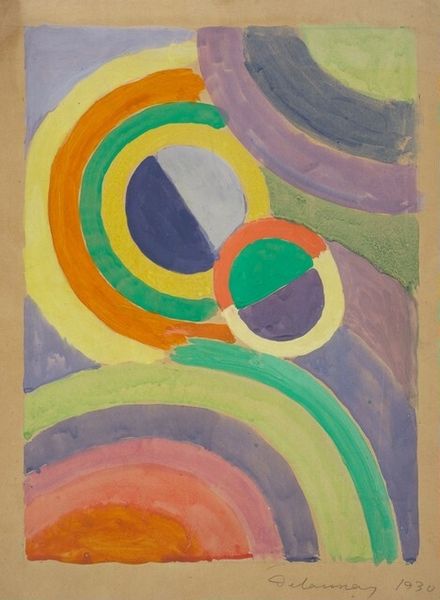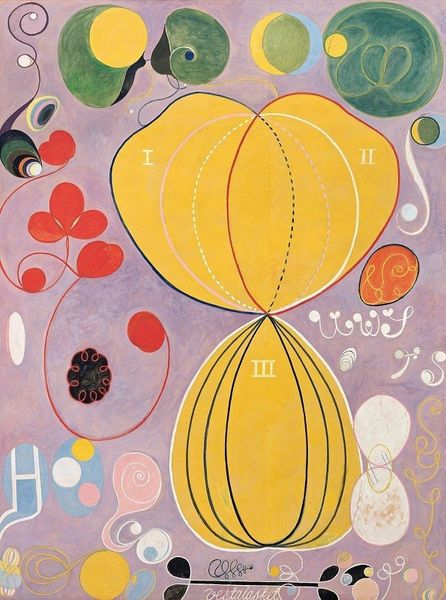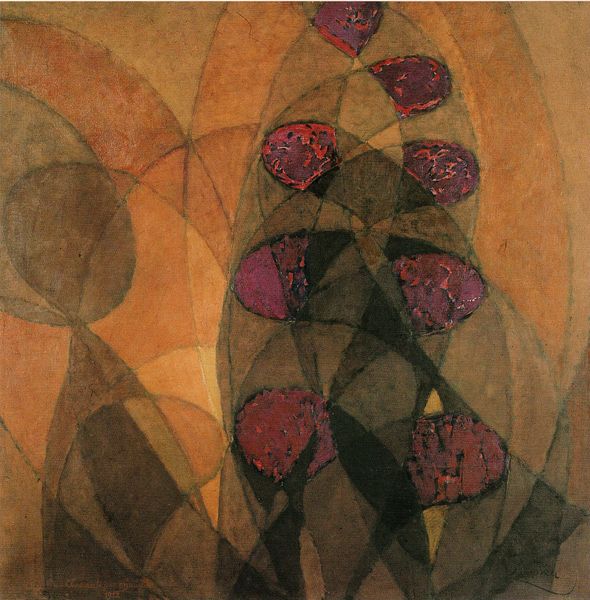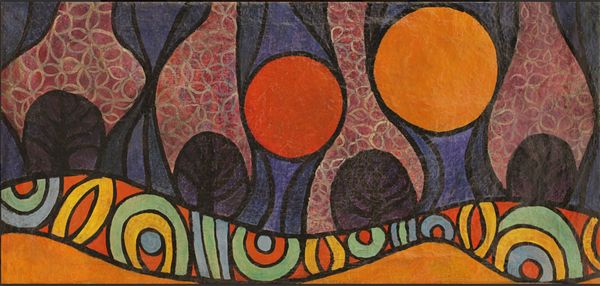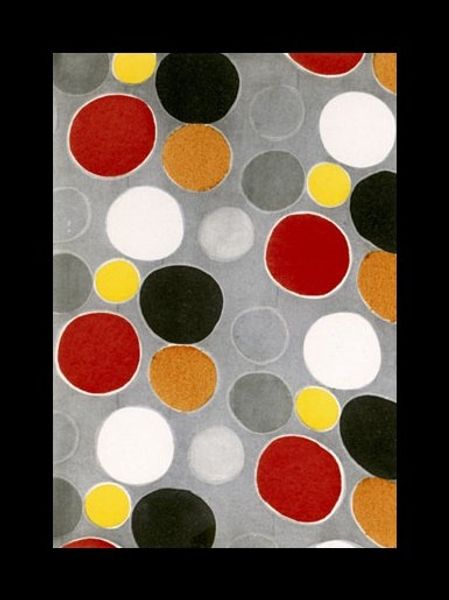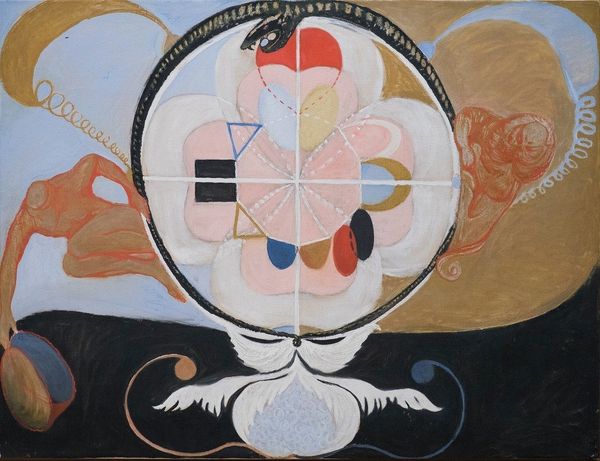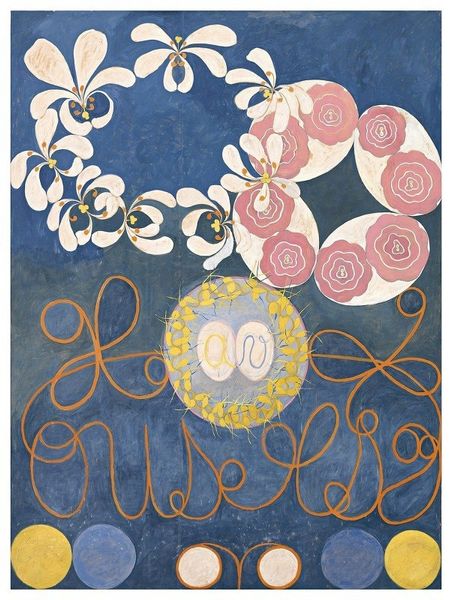
oil-paint
#
art-nouveau
#
abstract painting
#
non-objective-art
#
oil-paint
#
form
#
oil painting
#
geometric
#
geometric-abstraction
#
symbolism
Dimensions: 328 x 240 cm
Copyright: Public domain
Editor: So, here we have "The Ten Largest, No. 2, Childhood" painted in 1907 by Hilma af Klint. The composition is mostly circular forms rendered in oil on canvas, and the color palette is rather muted. What strikes me most is how playful and buoyant it feels despite being abstract. What do you see in this piece? Curator: Immediately, I'm drawn to the layered symbolism within these seemingly simple geometric shapes. Think about the circle as a symbol: wholeness, eternity, the self. Klint uses it repeatedly to suggest cycles of growth, maybe even spiritual progression. What memories or meanings do these shapes evoke for you personally? Editor: The flower-like forms feel very feminine to me. Do you see any gendered symbolism in this work? Curator: Absolutely. Klint was deeply interested in spiritualism and the blending of masculine and feminine energies. The floral motifs, the softer color palette – these might represent the feminine principle. But then, the sharp geometry and ordered composition could signify the masculine. Consider how those interact and potentially merge. Editor: That's a fascinating point! I hadn’t considered how the shapes themselves might represent different energies. Is it reaching to interpret that central hourglass form as representative of birth and creation? Curator: Not at all. That hourglass shape resonates deeply with alchemical symbolism, where it represents transformation and the joining of opposites, birth, death, and rebirth. Given Klint’s esoteric interests, it's quite plausible that she intended such an interpretation. Does knowing this impact your sense of the painting? Editor: It adds a layer of depth I wasn't aware of before. Now, I see it less as merely playful and more as a visual representation of spiritual ideas. Thanks! Curator: It’s through understanding the language of symbols that we can truly start to decode the artwork’s meaning. These symbols show the past alive in the present.
Comments
No comments
Be the first to comment and join the conversation on the ultimate creative platform.
